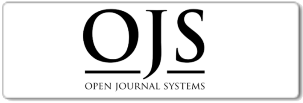Design and Implementation of Kernel-Based Quantum Classification Algorithms for Data Analysis in Software Engineering using Quantum Support Vector Machine (QSVM)
DOI:
https://doi.org/10.52436/1.jutif.2025.6.5.5030Keywords:
Data Analysis, Quantum Classification, Quantum Computing, Quantum Support Vector Machine (QSVM), Software EngineeringAbstract
With the increasing complexity of projects and the volume of data in Software Engineering (SE), the need for efficient and accurate data analysis techniques has become crucial. Classification algorithms play a vital role in various SE tasks, such as bug detection, software quality prediction, and requirements classification. Quantum computing offers a new paradigm with the potential to overcome classical computational limitations for certain types of problems. This research proposes the design and implementation of a kernel-based quantum classification algorithm (also known as Quantum Support Vector Machine - QSVM) tailored for data analysis in the SE domain. We will discuss the fundamental principles behind quantum feature mapping and quantum kernel matrices, and demonstrate its implementation using quantum computing libraries. As a case study, the designed algorithm will be tested on a software bug detection dataset, comparing its performance with classical kernel-based classification algorithms like Support Vector Machine (SVM). The result of the comparison show that QSVM is superior in terms of accuracy, precision, recall, and F1-score compared to SVM.
Downloads
References
W. Apt, “Introduction,” Demographic Research Monographs, pp. 1–13, 2014, doi: 10.1007/978-94-007-6964-9_1.
T. Menzies, J. Greenwald, and A. Frank, “Data mining static code attributes to learn defect predictors,” IEEE Transactions on Software Engineering, vol. 33, no. 1, pp. 2–13, 2007, doi: 10.1109/TSE.2007.256941.
M. Jørgensen, “A review of studies on expert estimation of software development effort,” Journal of Systems and Software, vol. 70, no. 1–2, pp. 37–60, 2004, doi: 10.1016/S0164-1212(02)00156-5.
A. Prakash and C. Sciences, “Quantum Algorithms for Linear Algebra and Machine,” 2014.
B. K. Behera, S. Al-Kuwari, and A. Farouk, “QSVM-QNN: Quantum Support Vector Machine Based Quantum Neural Network Learning Algorithm for Brain-Computer Interfacing Systems,” IEEE Transactions on Artificial Intelligence, pp. 1–12, 2025, doi: 10.1109/TAI.2025.3572852.
J. Preskill, “Quantum computing in the NISQ era and beyond,” Quantum, vol. 2, no. July, pp. 1–20, 2018, doi: 10.22331/q-2018-08-06-79.
M. Schuld and N. Killoran, “Quantum Machine Learning in Feature Hilbert Spaces,” Phys Rev Lett, vol. 122, no. 4, 2019, doi: 10.1103/PhysRevLett.122.040504.
M. D’Ambros, M. Lanza, and R. Robbes, Evaluating defect prediction approaches: A benchmark and an extensive comparison, vol. 17, no. 4–5. 2012. doi: 10.1007/s10664-011-9173-9.
W. El Maouaki, T. Said, and M. Bennai, “Quantum Support Vector Machine for Prostate Cancer Detection: A Performance Analysis,” pp. 1–14, 2024, [Online]. Available: http://arxiv.org/abs/2403.07856
S. Lessmann, B. Baesens, C. Mues, and S. Pietsch, “Benchmarking classification models for software defect prediction: A proposed framework and novel findings,” IEEE Transactions on Software Engineering, vol. 34, no. 4, pp. 485–496, 2008, doi: 10.1109/TSE.2008.35.
D. J. Woun and P. Date, “Adiabatic Quantum Support Vector Machines,” Proceedings - 2023 IEEE International Conference on Quantum Computing and Engineering, QCE 2023, vol. 2, pp. 296–297, 2023, doi: 10.1109/QCE57702.2023.10250.
V. Havlíček et al., “Supervised learning with quantum-enhanced feature spaces,” Nature, vol. 567, no. 7747, pp. 209–212, 2019, doi: 10.1038/s41586-019-0980-2.
T. Fawcett, “An introduction to ROC analysis,” Pattern Recognit Lett, vol. 27, no. 8, pp. 861–874, 2006, doi: 10.1016/j.patrec.2005.10.010.
M. Cerezo et al., “Variational quantum algorithms,” Nature Reviews Physics, vol. 3, no. 9, pp. 625–644, 2021, doi: 10.1038/s42254-021-00348-9.
S. Wang et al., “Noise-induced barren plateaus in variational quantum algorithms,” Nat Commun, vol. 12, no. 1, 2021, doi: 10.1038/s41467-021-27045-6.
A. Tudisco, D. Volpe, and G. Turvani, “Quantum Machine Learning in Healthcare: Evaluating QNN and QSVM Models,” 2025, [Online]. Available: http://arxiv.org/abs/2505.20804
S. Jeong, S. Kim, and J. Seo, “Quantum Support Vector Machine-Based Classification of GPS Signal Reception Conditions,” Proceedings - IEEE Quantum Week 2024, QCE 2024, vol. 2, pp. 530–531, 2024, doi: 10.1109/QCE60285.2024.10390.
H. Wang, “A novel feature selection method based on quantum support vector machine,” Phys Scr, vol. 99, no. 5, 2024, doi: 10.1088/1402-4896/ad36ef.
H. Y. Huang et al., “Power of data in quantum machine learning,” Nat Commun, vol. 12, no. 1, 2021, doi: 10.1038/s41467-021-22539-9.
M. Nadim, M. Hassan, A. K. Mandal, C. K. Roy, B. Roy, and K. A. Schneider, “Comparative Analysis of Quantum and Classical Support Vector Classifiers for Software Bug Prediction: An Exploratory Study,” pp. 1–29, 2025, doi: 10.1007/s42484-025-00236-w.
E. Akpinar, “Evaluating the Impact of Different Quantum Kernels on the Classification Performance of Support Vector Machine Algorithm : A Medical Dataset Application,” no. Ml.
M. Y. El Hafidi, A. Toufah, and M. A. Kadim, “Investigating Quantum Feature Maps in Quantum Support Vector Machines for Lung Cancer Classification,” pp. 1–14, 2025, [Online]. Available: http://arxiv.org/abs/2506.03272
T. Cultice, Md. S. H. Onim, A. Giani, and H. Thapliyal, “Quantum-Hybrid Support Vector Machines for Anomaly Detection in Industrial Control Systems,” pp. 1–12, 2025, [Online]. Available: http://arxiv.org/abs/2506.17824
M. Zhang, Y. Li, T. Yue, and K.-Y. Cai, “Quantum Optimization for Software Engineering: A Survey,” pp. 1–40, 2025, [Online]. Available: http://arxiv.org/abs/2506.16878
H. He and Y. Xiao, “Probabilistic Quantum SVM Training on Ising Machine,” no. 66, pp. 1–20, 2025, [Online]. Available: http://arxiv.org/abs/2503.16363
J. R. McClean, J. Romero, R. Babbush, and A. Aspuru-Guzik, “The theory of variational hybrid quantum-classical algorithms,” New J Phys, vol. 18, no. 2, pp. 0–20, 2016, doi: 10.1088/1367-2630/18/2/023023.
A. Abbas, D. Sutter, C. Zoufal, A. Lucchi, A. Figalli, and S. Woerner, “The power of quantum neural networks,” Nat Comput Sci, vol. 1, no. 6, pp. 403–409, 2021, doi: 10.1038/s43588-021-00084-1.
W. Jia, M. Sun, J. Lian, and S. Hou, “Feature dimensionality reduction: a review,” Complex and Intelligent Systems, vol. 8, no. 3, pp. 2663–2693, 2022, doi: 10.1007/s40747-021-00637-x.
F. M. Creevey, J. A. Heredge, M. E. Sevior, and L. C. L. Hollenberg, “Kernel Alignment for Quantum Support Vector Machines Using Genetic Algorithms,” pp. 1–14, 2023, [Online]. Available: https://arxiv.org/abs/2312.01562v1
A. Macaluso, “Quantum Supervised Learning,” KI - Kunstliche Intelligenz, 2024, doi: 10.1007/s13218-024-00856-7.
I. Kerenidis, J. Landman, A. Luongo, and A. Prakash, “Q-means: A quantum algorithm for unsupervised machine learning,” Adv Neural Inf Process Syst, vol. 32, 2019.
Additional Files
Published
How to Cite
Issue
Section
License
Copyright (c) 2025 M. Zakki Abdillah, Devi Astri Nawangnugraeni

This work is licensed under a Creative Commons Attribution 4.0 International License.



























